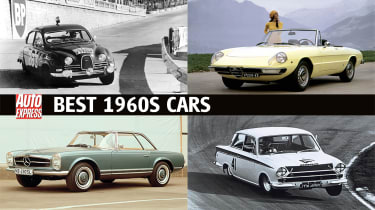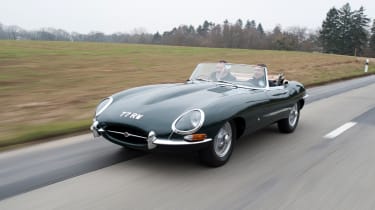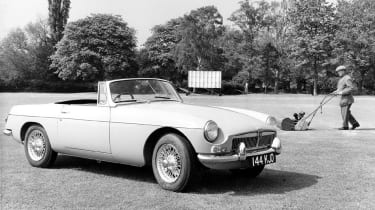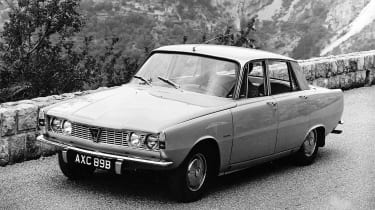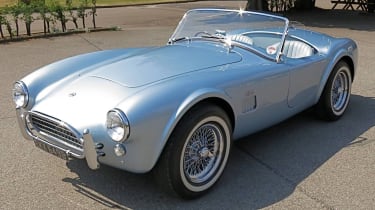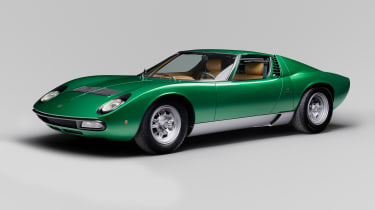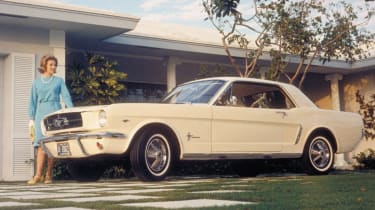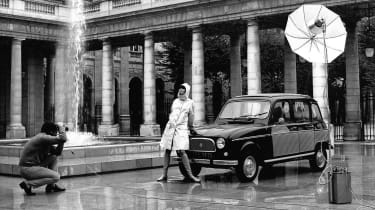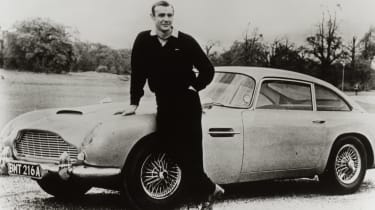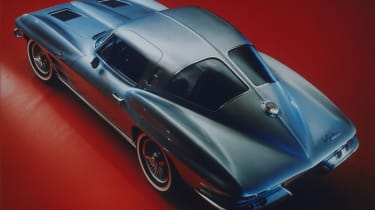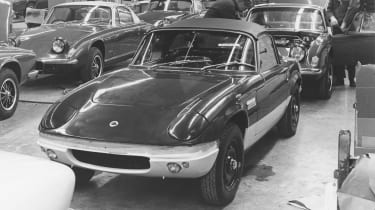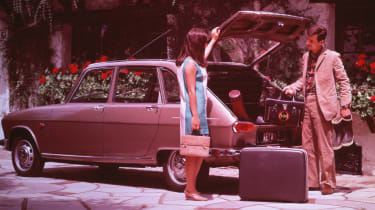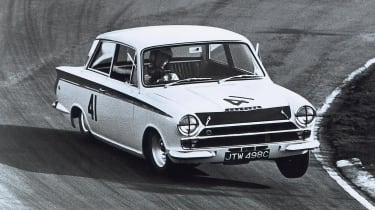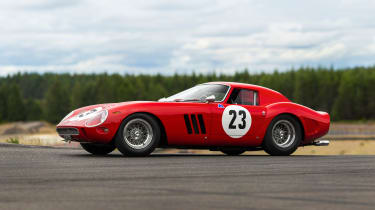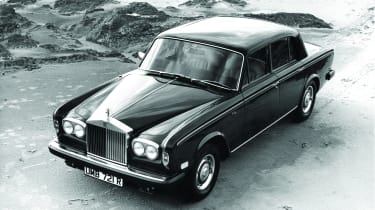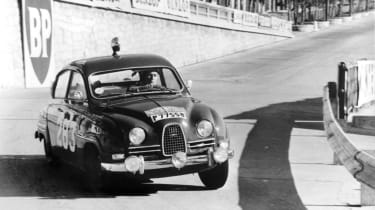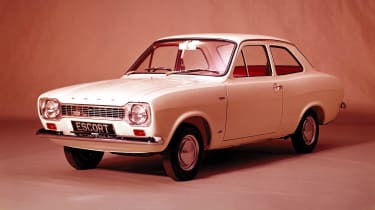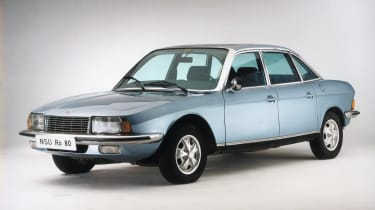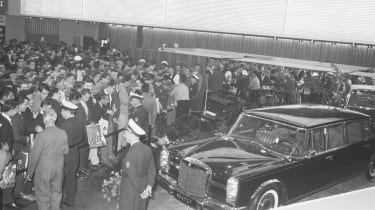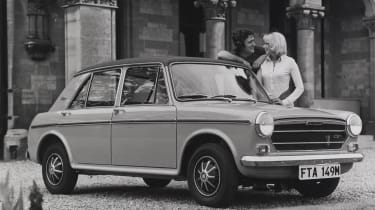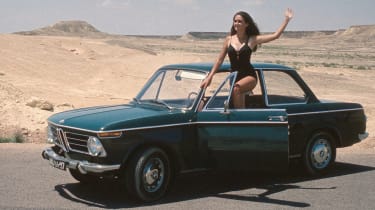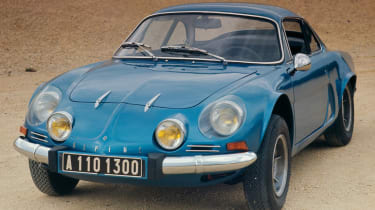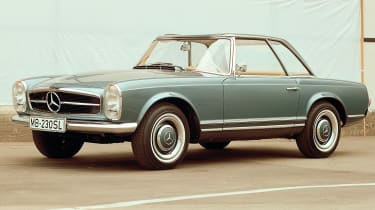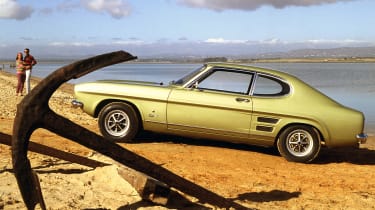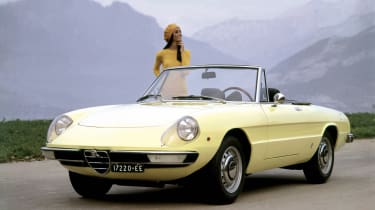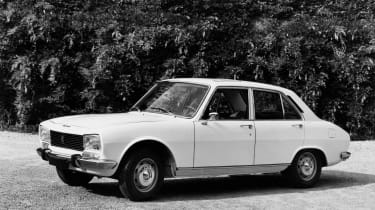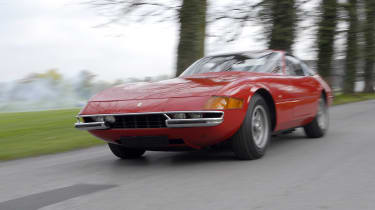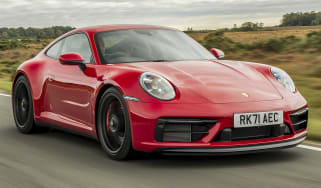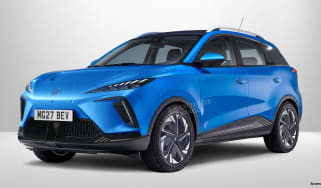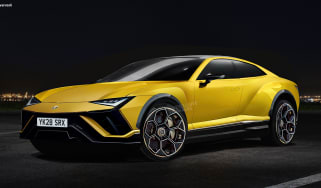Best 60s cars: the 30 greatest cars of the 1960s
The swinging sixties brought a vast array of unforgettable cars that would establish the path of the industry for decades to come. We pick our top 30 best 60s cars...
Millions of families got their first taste of motoring in the 1960s, with car ownership on the rise thanks to low unemployment, rising wages and an increasing sense of optimism. London finally emerged from the shadows of the Second World War, cementing itself as the epicentre of fashion, music and culture.
From Mary Quant’s mini skirt gracing Carnaby Street to the sound of the Beatles playing from bedrooms across the nation, there’s a sense that Britain found its groove in the Swinging Sixties. England certainly had the world at its feet in 1966.
The motoring landscape was transformed. Although it was launched in 1959, the Mini – originally known as the Austin Se7en and Morris Mini-Minor – became a symbol of 60s life. As fashionable as it was frugal; as practical as it was small.
However, the Mini wasn’t the only British car capable of conquering the world. In 1961, Jaguar unveiled the E-Type, a sports car so alluring, Enzo Ferrari described it as the most beautiful car in the world. It will come as no surprise to discover that both the Mini and the E-Type make our list of the best cars of the 1960s.
In truth, the 1960s was the last golden decade of the British car industry. Quite how Britain managed to snatch defeat from the jaws of victory is a subject that could be discussed at length. The quality of the cars produced by Jaguar, Rover, MG, Aston Martin and Lotus should have provided the foundations for greatness. It wasn’t to be.
Around a third of the cars to have made our list of best cars of the 60s were made in Britain, while the others add a touch of American and European style and glamour.
The best cars of the 1960s
Jaguar E-Type
The best car of the 60s? Probably not. The most beautiful car? More than likely. The car that had the biggest impact of the decade? Most certainly. Sixty years on, it’s hard to comprehend what it must have been like to see a Jaguar E-Type on the black and white streets of Britain. It was a phallic-shaped slice of technicolour.
Unveiled at the 1961 Geneva Motor Show, the E-Type was as fast as it was beautiful, even if the original claim of a 150mph top speed involved some clandestine tuning. Production continued until 1975, by which time it had put on some weight and gained a V12 engine.
Mini
It may have been designed, developed and launched in 1959, but the British Motor Corporation (BMC) Mini is as synonymous with the 1960s as Twiggy, Waterloo Sunset and Geoff Hurst’s hattrick. With sales of 1.0-litre and bubble cars booming following the Suez Crisis, Alec Issignonis was tasked with designing what BMC chief Leonard Lord referred to as a “proper small car”.
It was an instant success. Even before Big Ben chimed to mark the beginning of the decade, the Mini had cemented itself as BMC’s best-selling model. Celebrity endorsement, a classless image and success at the Monte Carlo Rally helped it to become a British icon.
MGB
Launched in 1962, the MGB bettered the outgoing MGA in just about every department. More powerful, faster, roomier and fitted with the kind of creature comforts that were absent from its 1950s predecessor. The quintessentially British styling helped it to become the world’s best-selling sports car.
Rear-wheel drive, an effective suspension system and front disc brakes meant that the original MGB was great to drive. A 1.8-litre engine developing 94bhp delivered just enough performance to entertain. Production continued until 1980, by which time it had spawned the Pininfarina-designed GT fastback of 1967 and the MGB GT V8 of 1973.
Rover P6
In 1964, the Rover P6 was the inaugural winner of the European Car of the Year award, beating none other than the Mercedes-Benz 600 into second place. Its radical styling shifted Rover away from the safe and conservative image established during the period of the P4, which was sold alongside the P6 for a short period.
Disc brakes were fitted all-round, while the body panels and mechanicals were bolted onto a steel skeleton structure to show that the Rover P6’s radical design was more than just skin deep. The 3500 V8 arrived in 1968 to give the P6 the performance to go with its style.
Jaguar MkII
Like the Mini, the Jaguar MkII arrived in 1959, but it became one of the archetypal saloon cars of the 1960s. Better looking than the MkI, the MkII was sensational to drive, particularly when powered by the fabulous 3.9-litre engine from the Jaguar XK.
A top speed of 125mph meant that it was one of the fastest production saloon cars of the era. This also meant that it became the car of choice for getaway drivers and bank robbers. Today, the MkII has cemented a place in British popular culture, thanks to its role in Inspector Morse.
AC Cobra
The AC Cobra may have been born in Britain, but it came of age in America. It was all thanks to racing driver and chicken farmer Carroll Shelby, who had the bright idea of crowbarring a V8 engine into the pretty but mild-mannered AC Ace sports car. A legend was born, first as the 4.2-litre Cobra 289, but later as the 7.0-litre Cobra 427.
In its most potent form, the Cobra could hit 60mph in just 4.2 seconds, before reaching a top speed of 165mph. Each one was produced in surprisingly low numbers, but the fearsome performance and legendary status inspired a long line of replicas.
Lamborghini Miura
The Lamborghini Miura is far from perfect, but look at it this way: would you kick a supermodel out of the house for leaving the cap off the tube of toothpaste? Deciding which is more beautiful, the Miura or the Jaguar E-Type, is like comparing a pair of catwalk models.
Legendary designer Marcello Gandini was the man tasked with styling the Italian beauty, which wowed the crowds at the 1965 Turin Motor Show. The more luxurious and more powerful Miura S arrived in 1968, before the Miura SV was unveiled in 1971. Amazingly, the Miura SV was overshadowed by its replacement: the Countach.
Ford Mustang
The first Ford Mustang rolled off the production line in 1964. More than just a car, the Mustang launched an entirely new market sector: the ‘pony car’. Lee Iacocca’s vision was for a sporty car that could seat four people, feature bucket seats, a floor-mounted shifter, be no more than 180 inches in length and weigh less than 2,500lbs. Oh, and it had to retail for less than $2,500.
To keep costs to a minimum, Ford based the Mustang on the humble Falcon saloon, while customers could personalise their new car via an array of colours, wheels and interior finishes. Ford sold 22,000 units on the first day. A star was born.
Renault 4
It might not be as famous as the Citroen 2CV, but the Renault 4 was actually a superior car to the legendary ‘Tin Snail’. Renault made no pretence that the 4 was in any way fashionable or even desirable. Instead, the Renault 4 majored on utilitarian practicality, thanks in no small part to an innovative estate car design and removable rear seats.
Over eight million units were sold over four decades, with production taking place in over a dozen countries. It was easy to drive and cheap to maintain, which made it incredibly popular in its native France.
Ford GT40
If you watched Le Mans ‘66, also known as Ford v Ferrari, you’ll be familiar with the story of how Ford vanquished Ferrari at the Le Mans 24-hour race in 1966. Although the film is more ‘Hollywood’ than an accurate portrayal of historic events, the story deserves a wider audience.
Designed in Detroit and assembled in Slough, the original GT40’s first outing at Le Mans ended in failure. Two years later, with Carroll Shelby in charge, Ford entered 15 Mark II GT40s at Le Mans. Three cars crossed the line together in an engineered photo finish to secure victory for Ford. Uncle Sam had beaten Enzo Ferrari.
Porsche 911
The Porsche 911 can trace its roots back to the 901 of 1963 (pictured), but when Peugeot objected to the use of a three-digit number with a zero in the middle, Ferdinand Porsche was forced into a rethink. The result was the Porsche 911 of 1964, a car that laid the foundations for decades of evolution and development.
Styled by Ferdinand’s sons, Ferry and Butzi, the 911 was a replacement for the unpredictable and unforgiving Porsche 356. The Targa arrived in 1967, which featured the world’s first roll-over protection bar. Today’s 911 uses the same rear-engined layout, although the air-cooled engine has been consigned to the history books.
Aston Martin DB5
Had it not been for its role in the 1964 James Bond film Goldfinger, the Aston Martin DB5 wouldn’t be any more famous than the DB4 before it and the DB6 that followed. Instead, it’s arguably the most famous movie car on the planet, which led to Aston Martin creating the DB5 Goldfinger Continuation. The price? A cool £3.3million.
The original DB5 was an elegant and quintessentially British GT car, albeit one penned by the Italian coachbuilders Carrozzeria Touring. Power was sourced from a 4.0-litre six-cylinder engine producing 282bhp, which was more than enough for chasing a Ford Mustang along the Furka Pass.
Chevrolet Corvette
The 1960s has been described as the golden age of the Corvette. Launched in 1953 as a car to take on the likes of the Jaguar XK120 and the MG TD, the Corvette established its own identity with the launch of the 1963 Sting Ray. “America’s only true sports car,” is how General Motors positioned the new car.
For the first time, the Corvette was available as a coupe, which featured a controversial split rear window. Chief engineer Zora Arkus-Duntov wasn’t a fan, so the design appeared only in the Corvette’s first year. Of the 21,000 Corvettes built in 1963, around half were the achingly pretty convertible.
Lotus Elan
How many people can claim to have invented one of the world’s best sports cars and one of the most famous portable workbenches. The late Ron Hickman designed the original Lotus Elan and the Workmate, marketed by Black & Decker. At the time of Hickman’s death in 2011, nearly 70m Workmates had been sold globally.
The Elan was no less successful for Lotus. Launched in 1962, some 9,150 cars were produced over a decade in which the Elan established itself as almost the perfect sports car. It’s perhaps most famous for being the car driven by Emma Peel (Diana Rigg) in The Avengers.
Renault 16
The Renault 16 was named European Car of the Year in 1966, beating the Rolls-Royce Silver Shadow to claim the top spot. It was no more than the car deserved, because the innovative Renault 16 popularised the idea of a family hatchback, with an interior offering six different seating arrangements.
It could be transformed from a hatchback to an estate, and anything in between, including a mobile bed. “Cars must no longer be just four seats and a boot. It must be viewed as a volume,” said Renault CEO Pierre Dreyfus. The 16 was the perfect demonstration of this vision.
Ford Cortina
It would be no exaggeration to say that the Ford Cortina changed the shape of British motoring. It wasn’t particularly innovative or radical, nor was it particularly special to look at. However, when it arrived in 1962, the Cortina captured the mood of the British public like no other car before it. Within a year, a record 250,000 people had bought a Ford Cortina.
The Lotus Cortina was the first fast Ford and arguably the first Q-car. Jim Clark won the 1963 British Touring Car Championship with ease, with the Lotus enjoying further success throughout Europe. A nation mourned when the Cortina made way for the Sierra in 1982.
Ferrari 250 GTO
The 1960s was a golden era for Ferrari, but one model stands head and shoulders above the rest. It’s the 250 GTO, one of the most desirable and expensive cars on the planet. When car number three (pictured) went under the hammer at the RM Sotheby’s Monterey auction in 2018, it sold for a record $48.4 million (£35 million).
Just 36 3.0-litre V12 versions were built, the total rising to 39 if you include the 4.0-litre versions. Either way, that’s a long way short of the 100 required for homologation purposes. Buyers were personally vetted by Enzo Ferrari to ensure they were suitable owners.
Rolls-Royce Silver Shadow
At its launch in 1965, the Rolls-Royce Silver Shadow was probably the best car in the world. It was certainly the most technologically advanced, featuring the likes of hydropneumatic rear suspension, split-level air-conditioning and electric seats. Power was sourced from a V8 engine, initially a 6.2-litre unit, with a 6.75-litre introduced in 1970.
It was a hugely successful model, with nearly 28,000 Silver Shadows sold before production stopped in 1980. Unfortunately, this oversupply led to plummeting values, which resulted in the Rolls-Royce falling into the wrong hands. It means the Silver Shadow has developed a reputation it doesn’t really deserve.
Saab 96
One of the most remarkable things about the Saab 96 is that it was a development of the 92, a car which dated back to 1949. Credit to the Swedish company, then, for unveiling a car that felt all-new when the first right-hand drive Saabs went on display at the 1960 British Motor Show. Highlights included independent suspension and, from 1962, front seatbelts. Dual-circuit brakes arrived in 1964.
The 96 was also a formidable rally car, particularly at the hands of Erik Carlsson. The Swedish driver won the RAC Rally in 1960, 1961 and 1962, and the Monte Carlo rally in 1962 and 1963.
Ford Escort
By the late-60s, Ford was in desperate need of a replacement for the ageing Anglia. The result was the Escort of 1968, marketed by Ford as “the small car that isn’t.” Four models were available at launch: De Luxe, Super, Super 1300cc and GT. Styling was conservative and inoffensive, albeit with a classic ‘Coke bottle’ design.
The Twin Cam was our first taste of a performance Escort, with power sourced from a modified Lotus engine. RS1600, Mexico, Sport and RS2000 models followed, but it’s the saloon, estate and van versions that were such a sales success.
NSU Ro80
The NSU Ro80 is a classic case of what might have been. At its launch in 1967, the Ro80 was one of the most technologically advanced cars in the world, which saw it being crowned European Car of the Year in 1968. One magazine claimed that it could be the car of the decade.
Highlights included a semi-automatic transmission, a drag coefficient of just 0.355 and styling that still looks fresh today. Its remarkable but troublesome twin rotary engine proved to be its undoing, with warranty claims sending NSU towards bankruptcy. The company was forced to merge with Audi, before the NSU name disappeared under Volkswagen ownership.
Mercedes-Benz 600
As flagships go, few are more opulent than the Mercedes-Benz 600 (W100). Launched at the 1963 Frankfurt Motor Show, the 6.3-litre V8 600 ‘Grosser’, once the most expensive car in the world, became the choice of dictators and megalomaniacs. If one of these rolled up outside your house or office, it was probably time to run or hide.
The generous specification included air suspension, all-round disc brakes, central locking and shock absorbers which could be adjusted on the move. The first bullet-proof Mercedes since the war arrived in 1965, while 43 special security versions were built for customers “who were faced with potential threats and who had the necessary financial means”.
BMC 1100/1300
The BMC 1100 and 1300 are often overshadowed by the Mini, but these were truly innovative British cars. Front-wheel drive, front disc brakes and a clever interconnected Hydrolastic suspension gave these BMC models the edge over their rivals, while Alec Issigonis’ design delivered a car with a huge amount of interior space.
A rapid 1300GT version arrived in 1969, although MG versions were available from the outset. The Vanden Plas versions catered for a different audience, featuring the likes of wood, leather and drop-down picnic tables. Unfortunately for BMC, the cost of development meant that the 1100 and 1300 weren’t as profitable as the sales figures would suggest.
BMW 02 Series
The modern BMW saloon can be traced back to the 02 Series of 1966. The forerunner to the BMW 3 Series was initially called the 1600-2 and was designed to introduce a new audience to the brand. It was both stylish and well-engineered, while its lightness meant that it was almost as quick as the larger 1800 saloon.
With such fine handling, it was only a matter of time before BMW’s attention turned to performance versions. First to arrive was the twin-carburettor 1600-2 Ti, which was followed by the 2002, so-called because power was sourced from a 2.0-litre engine.
Alpine A110
The Alpine A110 was proving that rear-engined sports cars made a lot of sense long before the Porsche 911. Launched in 1961, the A110 featured a glass-fibre body, backbone chassis, power from a Renault 8 Gordini engine and very little in the way of creature comforts. Company owner Jean Rédélé knew that lightness was the key to success.
It won numerous events, including a historic 1-2-3 at the 1971 Monte Carlo Rally and overall success in the 1973 World Rally Championship. The current Alpine A110 features styling inspired by the 1960s classic.
Mercedes-Benz SL
The Mercedes-Benz SL of 1963 had the tough act of following the iconic and glamorous 300 SL. While some designers would balk at such a challenge, Fredrich Geiger and Paul Bracq collaborated to create one of the prettiest and most elegant cars of the 1960s. The coupe roof is reminiscent of the curved roofs of the Far East, which led to the nickname ‘Pagoda’.
There were two versions available: a roadster with a folding soft top or a sports car with a removable coupe roof. It was the first sports car to feature a rigid passenger cell and front and rear crumple zones. Nearly 49,000 examples rolled out of the factory before production stopped in 1971.
Ford Capri
The Ford Capri was the ‘European Mustang’. Like its American cousin, the Capri used humble underpinnings, in this case the Ford Cortina, to create something more exotic and glamorous. It may have been smaller than the Mustang, but the Capri offered more interior space, which enabled Ford to market it as a four-seater coupe.
It was ‘the car you always promised yourself’, even if your budget could stretch only to a lowly 1.3-litre version. Not that this matters, because the Capri 1.3 offered all the style of the Capri 3.0, but without the performance and higher running costs. No other country embraced the Capri quite like the UK.
Alfa Romeo Spider
Launched in 1966 as the Duetto, the Alfa Romeo Spider is one of the most recognisable sports cars in the world. The fact that it’s devastatingly pretty helps, as does the fact that the car appeared in the Dustin Hoffman film The Graduate. Build quality wasn’t its strongest point, but this wouldn’t have mattered to anyone enjoying the tidy handling and charismatic engines.
The 1.6-litre engine made way for a 1.8-litre unit in 1967, at which point the car adopted the Spider name. Production spanned four decades, with the Spider finally losing its legs in 1993.
Peugeot 504
Named European Car of the Year in 1969, the Peugeot 504 was one of the most versatile cars in the world. Launched in 1968 as a rather conventional saloon car, the 504 spawned a number of variations, including a pretty 504 Cabriolet and a stunning 504 Coupe.
Estate, van and pick-up versions were also available, while the robust construction and ride comfort meant that the 504 developed a loyal following in North Africa. Closer to home, many children spent their formative years in the back of an eight-seat Familiale. European sales stopped in 1982, although sales of the van and pick-up continued until 1993.
Ferrari 365 GTB/4 Daytona
In truth, 30 cars aren’t enough to showcase the breadth of cars on sale in the 1960s. Our shortlist could have been significantly longer if we could feature the many cars that didn’t make the cut. Some, such as the Alfa Romeo Giulia Sprint GT, Mercedes-Benz 300 SEL and Maserati Ghibli, could easily replace the cars we have selected.
We’ll leave you with one of the cars that made our list of the top 10 Ferraris. The 365 GTB/4 had the power to out-muscle a Miura and the glamorous styling to outshine a Hollywood starlet. Launched at the 1968 Paris Motor Show, it was christened the ‘Daytona’ in honour of Ferrari’s 1-2-3 victory at the 24-hour race in 1967.
Want to see these legendary machines up close? Check out our list of the best classic car shows to visit
